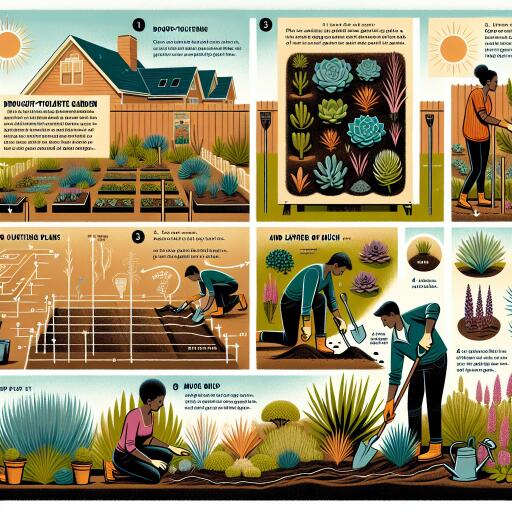
Embracing Drought-Tolerant Landscaping: A Step-by-Step Guide
Embarking on the journey of transforming your outdoor space into a drought-tolerant landscape marries the art of beautiful garden design with the science of sustainability. This green initiative, often referred to as xeriscaping, leverages drought-resistant plants and water-saving techniques to forge an environment that flourishes even in dry conditions. Here’s how you can make a drought-tolerant landscape a reality in your outdoor living area.
Understanding Your Landscape
The first step towards a drought-tolerant garden is a thorough evaluation of your current landscape. Observe the patterns of sunlight and shade, get familiar with the type of soil, and identify any natural water sources. These factors are critical in deciding the most suitable plant species and landscaping features that will thrive in your garden.
Selecting the Right Plants
Choosing plants native to your region is a cornerstone of drought-tolerant landscaping. These plants are adapted to the local climate and require minimal water beyond natural rainfall. Aim for a mix of species that bring texture and color to your garden, all the while ensuring they have low water needs.
Soil and Water Management
Proper soil preparation is key. Enriching your soil with organic matter can significantly enhance its structure and water retention capabilities. Integrate compost or mulch to promote a healthy root system and conserve moisture. It’s also wise to invest in water-efficient solutions such as drip irrigation systems, which target water directly to the roots, and rain barrels for harvesting rainwater. Design your landscape in zones that reflect the water needs of various plants to optimize water use.
Design and Maintenance
Incorporate hardscaping features like pathways or patios to add functionality and reduce water usage. Grouping plants with similar water needs will simplify your irrigation strategy. Regular upkeep, including mulching, pruning, and monitoring plant health, is essential for a thriving drought-tolerant garden. Seasonally adjusting your irrigation can further enhance water efficiency.
Conservation and Biodiversity
Water conservation is at the heart of xeriscaping. Employ strategies like using collected rainwater for irrigation and selecting water-efficient fixtures to minimize waste. A diverse plant selection not only adds aesthetic value but also supports local wildlife, promoting a balanced and vibrant ecosystem.
Expertise and Implementation
If you’re a novice in drought-tolerant landscaping, don’t hesitate to seek advice from a professional. Landscaping experts can provide valuable design insights and help identify the best plant species for your garden, ensuring a successful and sustainable outcome.
The Benefits of Sustainability
Adopting drought-tolerant landscaping practices is not just an environmentally conscious decision; it transforms your garden into a stunning and resilient space. These landscapes require less maintenance, conserve water, and provide a habitat for local fauna. As your garden evolves, take pride in its sustainability and the serene beauty it adds to your outdoor living space.
Creating a drought-tolerant landscape is a rewarding endeavor that pays dividends in environmental conservation and personal enjoyment. By carefully planning and maintaining your garden, you contribute to a sustainable future, enjoying the serene beauty and ecological benefits of your outdoor sanctuary.





Leave a Reply